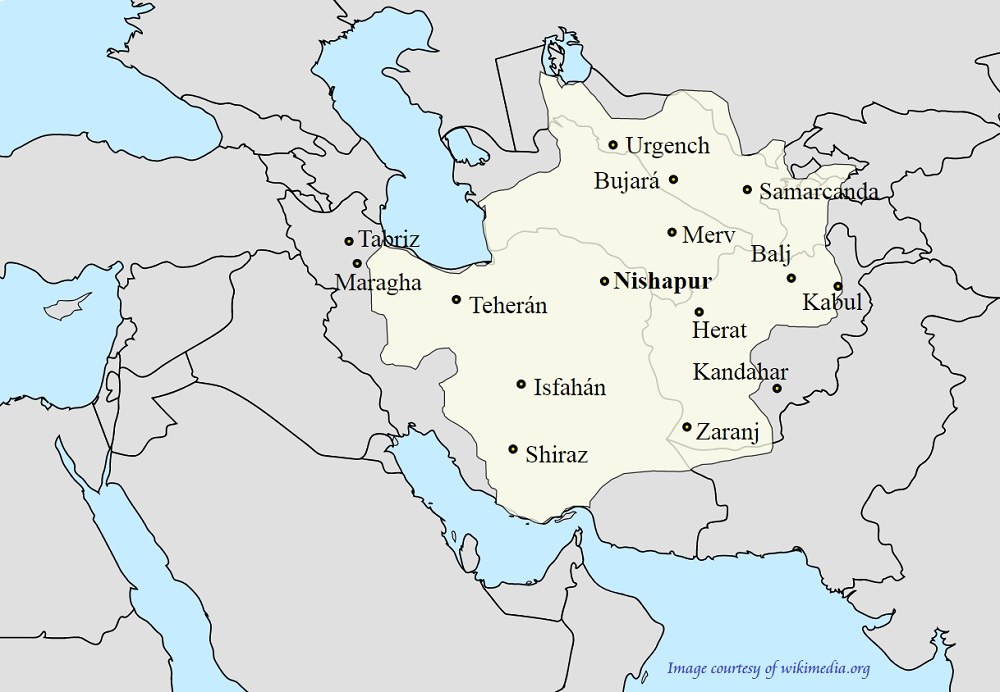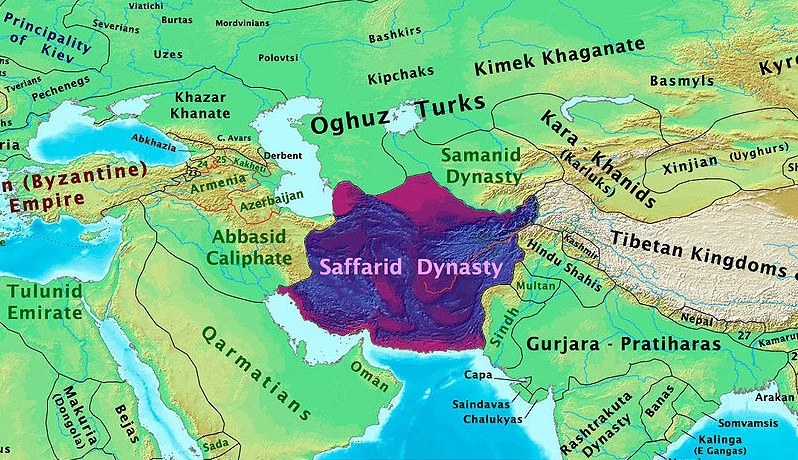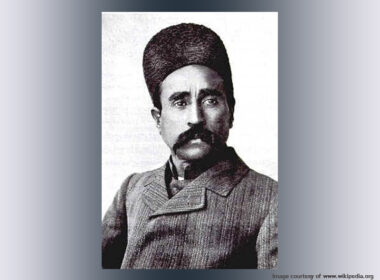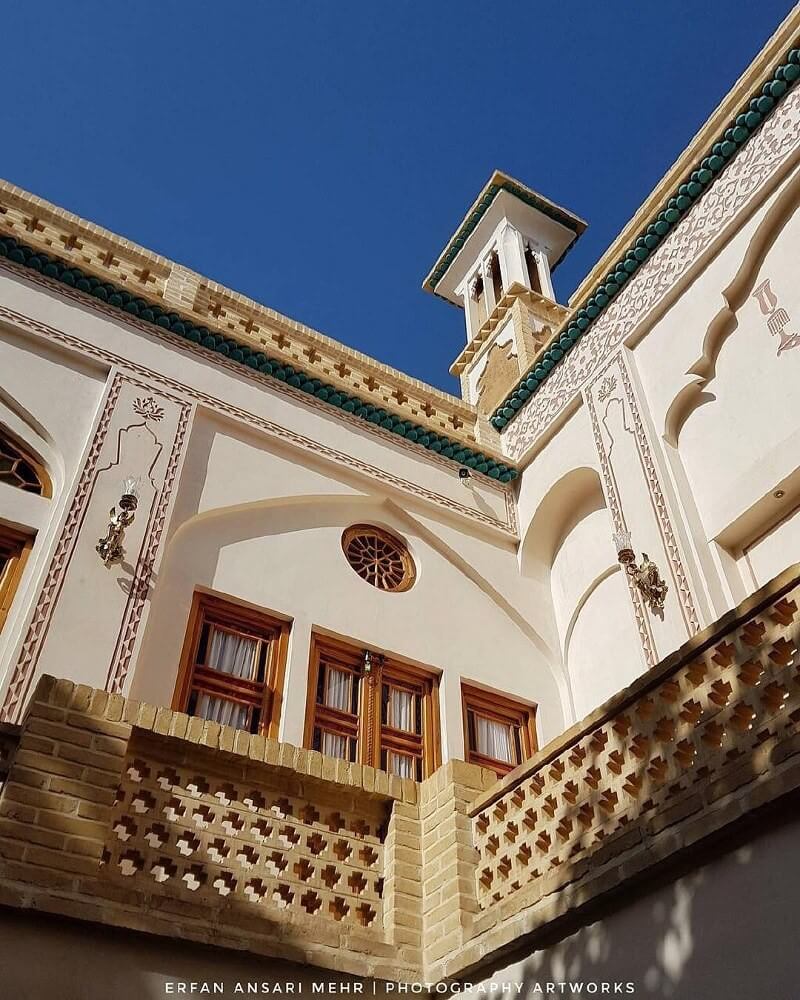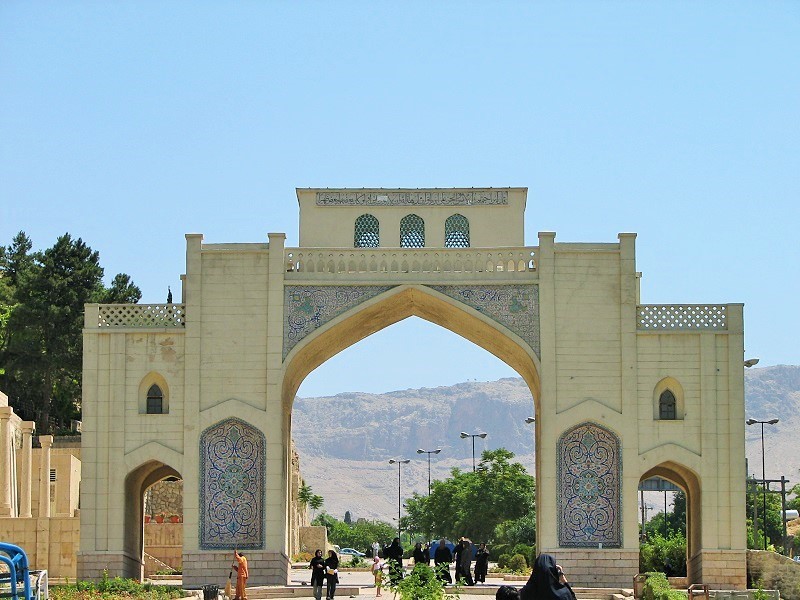
One of the markers of every city is its gates. Due to its long history, Shiraz has many tourist attractions. In the past, Shiraz had six gates, but only one of them remains standing today. Quran Gate of Shiraz is the last gate, located in a gorge called Allahu Akbar.
It is said that people were amazed by its beauty on their way to Shiraz through the gorge. The magnificence of this city caused people to cry “Allahu Akbar”. As a result, this gorge became known as Allah Akbar.
The old gates of Shiraz were: Quran Gate, Isfahan Gate, Saadi Gate, Ghasabkhaneh (slaughterhouse), Kazerun Gate, and Shah Dai-ol-llah Gate. Out of the six gates, only the Qur’an gate remains; the rest were destroyed.
The Qur’an Gate is located between Chehel Maqam Mountain and Baba Kuhi Mountain. This gate was built at the northern exit of Shiraz facing the ring road and Marvdasht road.
Shiraz Qoran Gate in Daylamites and Zand Dynasty
The Quran gate was first built by Adud al-Dawla, the Daylamite ruler. The construction of the structure dates back to 950 AD. Since this gate had suffered much damage, Karim Khan Zand sought to repair it and ordered two volumes of the Quran to be placed in the small room above the entrance. After the introduction of Islam, Iranians adopted the custom of passing under the Quran when entering and leaving a city.
Over time, the Quran gate has been damaged many times. However, the gate has been restored several times throughout different periods. The most significant reconstruction of the gate took place during the reign of Karim Khan Zand.
Since Karim Khan Zand had named Shiraz his capital, he made great efforts toward its development. He sought to build a beautiful monument for public display at the city’s entrance. And so, the old gate was rebuilt in a new image.
The two volumes of the Quran were a vital part of this reconstruction. This Quran was called the “Seventeen Maund” Quran. A Maund is a unit of weight, and its Iranian version roughly equals 18 kilograms. The reason for this name is that the volume was heavy. Today, the Seventeen Maund Quran is preserved in the Pars Museum of Shiraz and weighs 51 kilograms (112 pounds) after restorative bookbinding.
The History of the Quran Gate in Recent Years
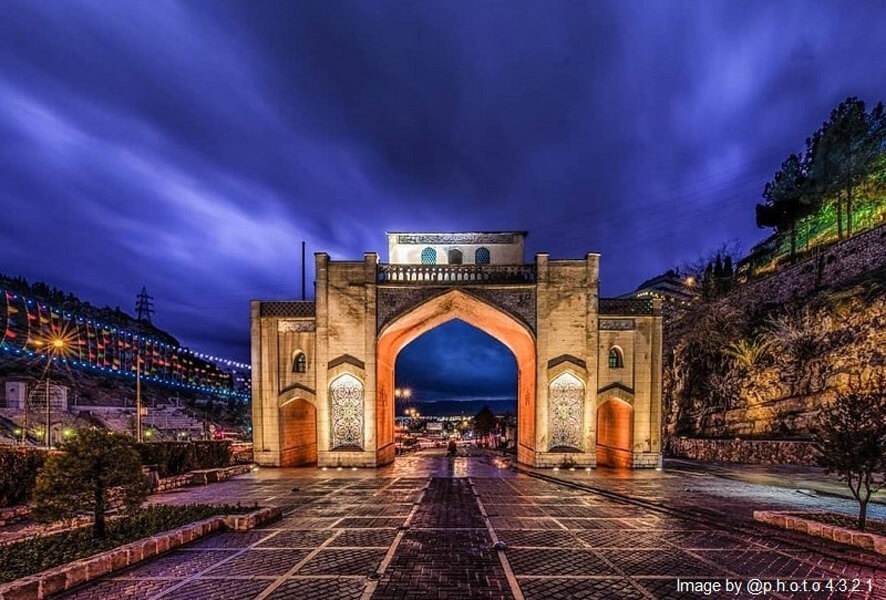
The Qur’an gate of Shiraz was damaged several times by earthquakes in the Qajar period. At that time, this gate was called Taq (Vault) Qur’an. Finally, in 1936, the gate built during the Zand period was destroyed again. There are two theories about the reason for the destruction of this building:
- Incompetence of Shiraz Municipality: It is said that due to the incompetence of the municipality, the Quran gate was destroyed by some people using dynamite.
- Destruction of the gate due to the road’s poor condition for vehicles: Shiraz municipality is believed to have destroyed the Quran gate with dynamite. The vault made passage difficult for trucks. The gate’s demolition made the road more accessible for the passage of heavy vehicles.
The people of Shiraz were unhappy with the destruction of the Quran gate. Therefore, in 1950, one of the famous merchants of Shiraz named Hossein Eigar reconstructed the gate for the third time.
The gate built by Eigar is larger and has a sharp vaulted opening. In addition to the main entrance of the gate, there are two small entrances on the sides of the main entrance. There is a rectangular room above the gate where the Qurans are placed. The western entrance of the building has a staircase that leads to this rectangular room. The room has three lattice windows, and its walls are tiled.
The tomb of the founder of the gate, Hossein Eigar, is located at the east entrance. He and his wife are laid to rest next to the gate.
The materials used in the new gate are stone and cement. The facade of the gate is built in a traditional style, and its north and south sides are decorated with tiles. Also, verses from the Quran have been carved around the gate in Thuluth and Naskh script.
Don’t Miss Visiting This Attraction
The Quran Gate of Shiraz is one of the landmark structures of this city, located at its entrance. If you plan to travel to Shiraz on an Iran tour package or privately, we recommend entering the city through the Quran Gate. You can see the beautiful gate building in Allahu Akbar gorge.
The sight of the Quran Gate of Shiraz at the front of the city is a sign of the presence of beautiful historical attractions there. The historical city of Shiraz has many historical sites, and the Quran Gate is one of them. Destination Iran invites you to visit this monument and other Shiraz tourist attractions.
Where is the Quran Gate of Shiraz?
The Quran Gate is located between the Chehel Maqam and Babakuhi mountains in the Allahu Akbar gorge. This gate was built in the north of Shiraz, facing Isfahan and the Marvdasht road. You can see the exact location of this gate below:
Frequently Asked Questions About Quran Gate of Shiraz
To find answers to your other questions, contact us through the comments section of this post. We will answer your questions as soon as possible.
In which historical period was the Quran Gate of Shiraz built?
In 950 AD, Adud al-Dawla, the Daylamite ruler, ordered the construction of this gate, which was one of the six gates of Shiraz.
What is the history of the Quran Gate of Shiraz restorations?
Quran Gate of Shiraz has been destroyed and restored many times. Karim Khan Zand ordered the most significant restoration during the Zand era. He ordered two Qurans to be placed in the rooms above the gate. One of the Qurans, known as “Seventeen Maund” is now kept in the Pars Museum of Shiraz. After that, and following the earthquake that occurred during the Qajar period, the Quran Gate was destroyed and reconstructed.
Quran Gate of Shiraz was destroyed once again in 1936, apparently to facilitate the passage of trucks. Eight years later, Hossein Eigar, one of Shiraz’s merchants, reconstructed the Quran gate for the third time. Several restorations have taken place on the Quran Gate by the Islamic Republic of Iran since then.
How does the Quran gate of Shiraz look at night?
The nights at the Quran Gate in Shiraz are bright and full of life. This building, which is located near the tomb and garden of Khwaju Kermani, is one of the recreational centers for nightlife in Shiraz.


